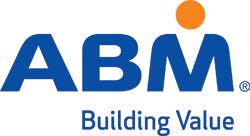From working with schools across the country for over 100 years, ABM is keenly aware of the unique and complex needs that urban school districts have. Be it the student achievement gap or funding and infrastructure challenges, ABM takes a fundamentally different approach to solving these needs. The goal: to redirect non-instructional funds back to student needs and educational priorities. The solution: to generate massive savings and ongoing revenue opportunities tailored to urban school districts.
In a recent interview, Dan Dowell, Senior Vice President of Education Sales and Strategy at ABM Industries, provided a broader discussion of what solutions ABM can provide to urban school districts to help them thrive today, tomorrow and for decades to come. Here’s what he had to share.
What are some of the specific needs that urban school districts are facing, as compared to suburban ones?
Many of the urban school leaders we speak with note that they have a lot of poverty in their districts. As a result, the support systems for urban students, schools and districts may not be as well-funded as what we see in a suburban setting.
Here’s an example of how that impacts everything further down the line.
We learned during the pandemic that upwards of 38% of the urban school students taking classes at home had no Wi-Fi whatsoever, putting them at a great disadvantage. As a result, a lot of students just checked out, because it became challenging for them to stay engaged.
We know that high absenteeism leads to lower test scores, and that lower test scores lead to high dropout rates. Compound that with the massive challenges these students and families were constantly facing throughout COVID-19, and we witnessed the already wide student achievement gap grow even wider. That’s just not happening in suburban districts.
We see the same challenges with urban school facilities, as well. The average urban school district across the United States carries about $11,000 in deferred maintenance per student. This adds up to billions of dollars for our country’s largest school districts — to the tune of $2.4B for Los Angeles, $3.8B for Chicago and $6.6B for Houston.
The need to upgrade facilities is so great, but these urban schools just don't have the steady money to do it, so they continue to fall further and further behind.
These urban districts have faced these funding and facility issues for decades. Why is now the time for district leaders to take a different course of action?
Let’s take a step back in time for a minute. In 2009, President Obama passed the American Recovery and Reinvestment Act (ARRA) that provided billions of dollars to the U.S. Department of Education. It was a much needed stimulus package during the time of the Great Recession, but a lot of studies have since shown that those ARRA dollars helped only for the moment they were given.
There were no investments made by, for or in school districts that helped them in the long run. Thus, a large majority of school districts have still not returned to their pre-recession funding levels. In short, the problems haven't been fixed.
Fast forward to present day, and these same school districts are now receiving Elementary and Secondary School Emergency Relief (ESSER) stimulus funds. Having learned from the ARRA days, the question educational leaders now need to be asking is, “How are we going to invest it for the long term?”
ABM has designed a program that can produce 15 years’ worth of General Fund savings or balance increases when those ESSER funds are used to renovate and upgrade facilities, opening up a whole new world of funding strategies.
On average, for every million dollars of ESSER funds invested, ABM can help create an additional $100,000 in General Fund relief. That's new money that can now be moved to other areas of the budget, such as teacher and counselor salaries, equitable education and capital cost avoidance.
How is ABM more than just a simple service provider for urban districts? Would you consider ABM to be a partner for the schools they service?
Our core focus has always been based on understanding the issues that school systems are facing.
Rather than going to an urban school district and saying, "We have something very particular we need to sell you, so we’re going to steer all conversations to that,” our approach is to meet with them and say, "We want to look at, identify and help you solve the real problem.”
To earn their trust, we come in and perform analyses around a district’s non-instructional spend — energy, capital, maintenance and more — to come up with actionable solutions based on facts that address the actual needs of urban schools. Then we determine how ABM best fits within this to provide a greater delta between where the client is, and where we can get them. Operationally, that could be a 30% change, and we've seen even higher.
We’re also helping urban school districts analyze and change their spending patterns to create new opportunities for funding streams of their own — all without needing to increase taxes across the district.
What does ABM provide that perhaps a school-staff facility services team can’t?
What makes ABM really unique as a partner is that we have such a wide breadth of services.
ABM can renovate, operate and maintain a building, and we know what a best-in-class facilities support structure looks like, because we're doing it all across the country. We also have visibility into what’s working for other urban school districts, and we apply those insights at the local level.
Our business model of using only our own staff at client facilities, rather than subcontracting with multiple vendors, prevents multiple levels of mark-ups. We're also not encumbered by any kind of manufacturer requirements to sell a particular product or service.
In short, ABM helps urban school districts compress their non-instructional spending. This creates General Fund relief that allows them to make impactful, long-term investment decisions based on their individualized challenges. The goal: to help urban districts close the student achievement gap through gaining a better understanding of how they can change their own future.
Bring efficiency to your bottom line so your students and staff can thrive.
Get the ABM Action Plan for Urban School Districts.
Dan Dowell is Senior Vice President of Education Sales and Strategy at ABM Industries. You can reach him at [email protected].
Sponsored by:

